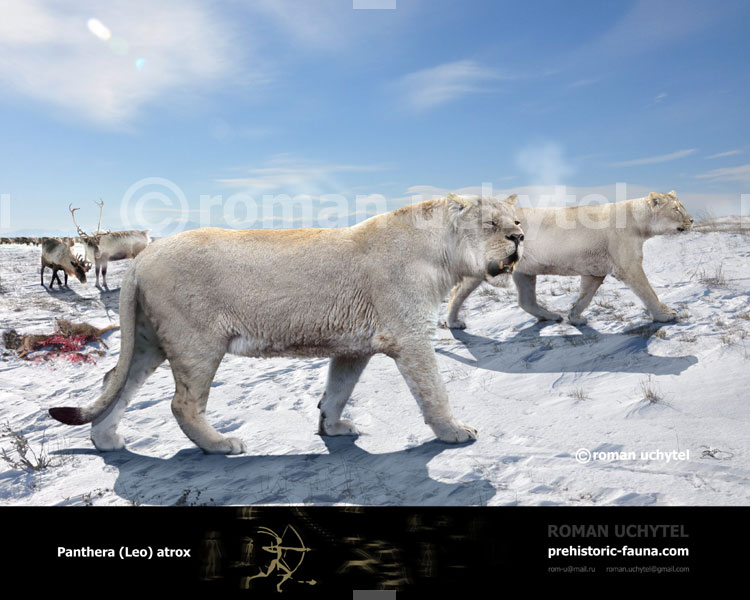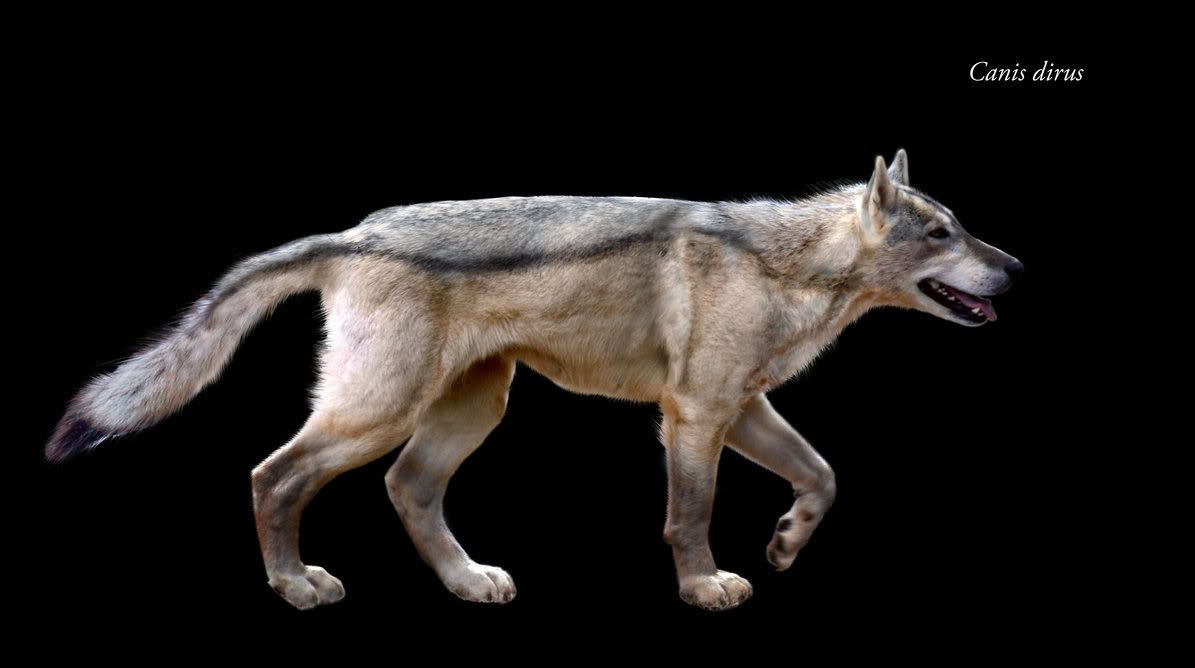Post by dinosauria101 on Mar 14, 2019 9:04:37 GMT 5
American Lion - Panthera leo atrox
The American lion (Panthera leo atrox or P. atrox) — also known as the North American lion, Naegele’s giant jaguar or American cave lion — is an extinct lion of the family Felidae, endemic to North America during the Pleistocene epoch (0.34 mya to 11,000 years ago), existing for approximately 0.33 million years. It has been shown by genetic analysis to be a sister lineage to the Eurasian cave lion (Panthera leo spelaea or P. spelaea). The American lion is an extinct animal which originated in North America and went on to colonize part of South America as part of the Great American Interchange. The head-body length of the American lion is estimated to have been 1.6–2.5 m (5 ft 3 in–8 ft 2 in) and it would have stood 1.2 metres (4 ft) at the shoulder. Thus it was smaller than its contemporary competitor for prey, the giant short-faced bear, which was the largest carnivoran of North America at the time. The American lion was not as heavily built as the saber-toothed cat Smilodon populator, which may have weighed up to 360–470 kilograms (790–1,000 lb). Sorkin (2008) estimated it to weigh roughly 420 kilograms (930 lb), but new estimations show a top weight of 351 kg (774lbs.) for the largest specimen and an average weight for males of 255.65 kg (563lbs.).

Dire Wolf (pack of 6/7) - Canis dirus
The Dire wolf (Canis dirus) is an extinct carnivorous mammal of the genus Canis, and was most common in North America and South America from the Irvingtonian stage to the Rancholabrean stage of the Pleistocene epoch living 1.80 Ma – 10,000 years ago, existing for approximately 1.79 million years. lthough it was closely related to the Gray Wolf and other sister species, Canis dirus was not the direct ancestor of any species known today. Unlike the Gray Wolf, which is of Eurasian origin, the Dire Wolf evolved on the North American continent, along with the Coyote. The Dire Wolf co-existed with the Gray Wolf in North America for about 100,000 years. The Dire Wolf was larger than the Gray Wolf, averaging about 1.5 metres (5 ft) in length and weighing between 50 kg (110 lb) and 79 kg (174 lb). Despite superficial similarities to the Gray Wolf, there were significant differences between the two species. The legs of the Dire Wolf were proportionally shorter and sturdier than those of the Gray Wolf, and its brain case was smaller than that of a similarly sized gray wolf. The Dire Wolf's teeth were similar to the Gray Wolf's, only slightly larger, pointing to a hypercarnivorous to mesocarnivorous activity. Paleontologist R.M. Nowak states the dietary characteristics are primarily carnivorous as well as partially omnivorous.

Credit to Wikipedia
The American lion (Panthera leo atrox or P. atrox) — also known as the North American lion, Naegele’s giant jaguar or American cave lion — is an extinct lion of the family Felidae, endemic to North America during the Pleistocene epoch (0.34 mya to 11,000 years ago), existing for approximately 0.33 million years. It has been shown by genetic analysis to be a sister lineage to the Eurasian cave lion (Panthera leo spelaea or P. spelaea). The American lion is an extinct animal which originated in North America and went on to colonize part of South America as part of the Great American Interchange. The head-body length of the American lion is estimated to have been 1.6–2.5 m (5 ft 3 in–8 ft 2 in) and it would have stood 1.2 metres (4 ft) at the shoulder. Thus it was smaller than its contemporary competitor for prey, the giant short-faced bear, which was the largest carnivoran of North America at the time. The American lion was not as heavily built as the saber-toothed cat Smilodon populator, which may have weighed up to 360–470 kilograms (790–1,000 lb). Sorkin (2008) estimated it to weigh roughly 420 kilograms (930 lb), but new estimations show a top weight of 351 kg (774lbs.) for the largest specimen and an average weight for males of 255.65 kg (563lbs.).

Dire Wolf (pack of 6/7) - Canis dirus
The Dire wolf (Canis dirus) is an extinct carnivorous mammal of the genus Canis, and was most common in North America and South America from the Irvingtonian stage to the Rancholabrean stage of the Pleistocene epoch living 1.80 Ma – 10,000 years ago, existing for approximately 1.79 million years. lthough it was closely related to the Gray Wolf and other sister species, Canis dirus was not the direct ancestor of any species known today. Unlike the Gray Wolf, which is of Eurasian origin, the Dire Wolf evolved on the North American continent, along with the Coyote. The Dire Wolf co-existed with the Gray Wolf in North America for about 100,000 years. The Dire Wolf was larger than the Gray Wolf, averaging about 1.5 metres (5 ft) in length and weighing between 50 kg (110 lb) and 79 kg (174 lb). Despite superficial similarities to the Gray Wolf, there were significant differences between the two species. The legs of the Dire Wolf were proportionally shorter and sturdier than those of the Gray Wolf, and its brain case was smaller than that of a similarly sized gray wolf. The Dire Wolf's teeth were similar to the Gray Wolf's, only slightly larger, pointing to a hypercarnivorous to mesocarnivorous activity. Paleontologist R.M. Nowak states the dietary characteristics are primarily carnivorous as well as partially omnivorous.

Credit to Wikipedia


